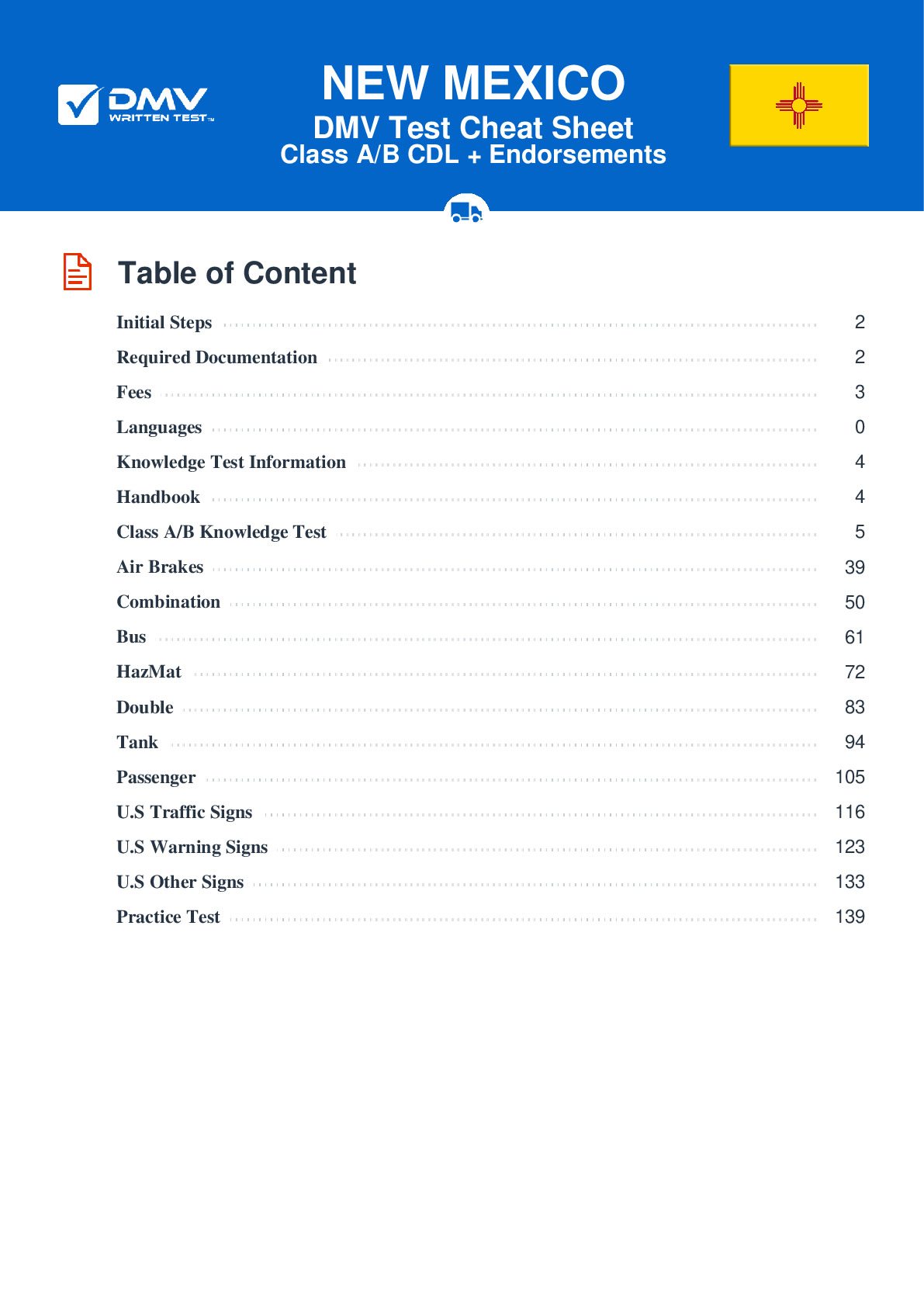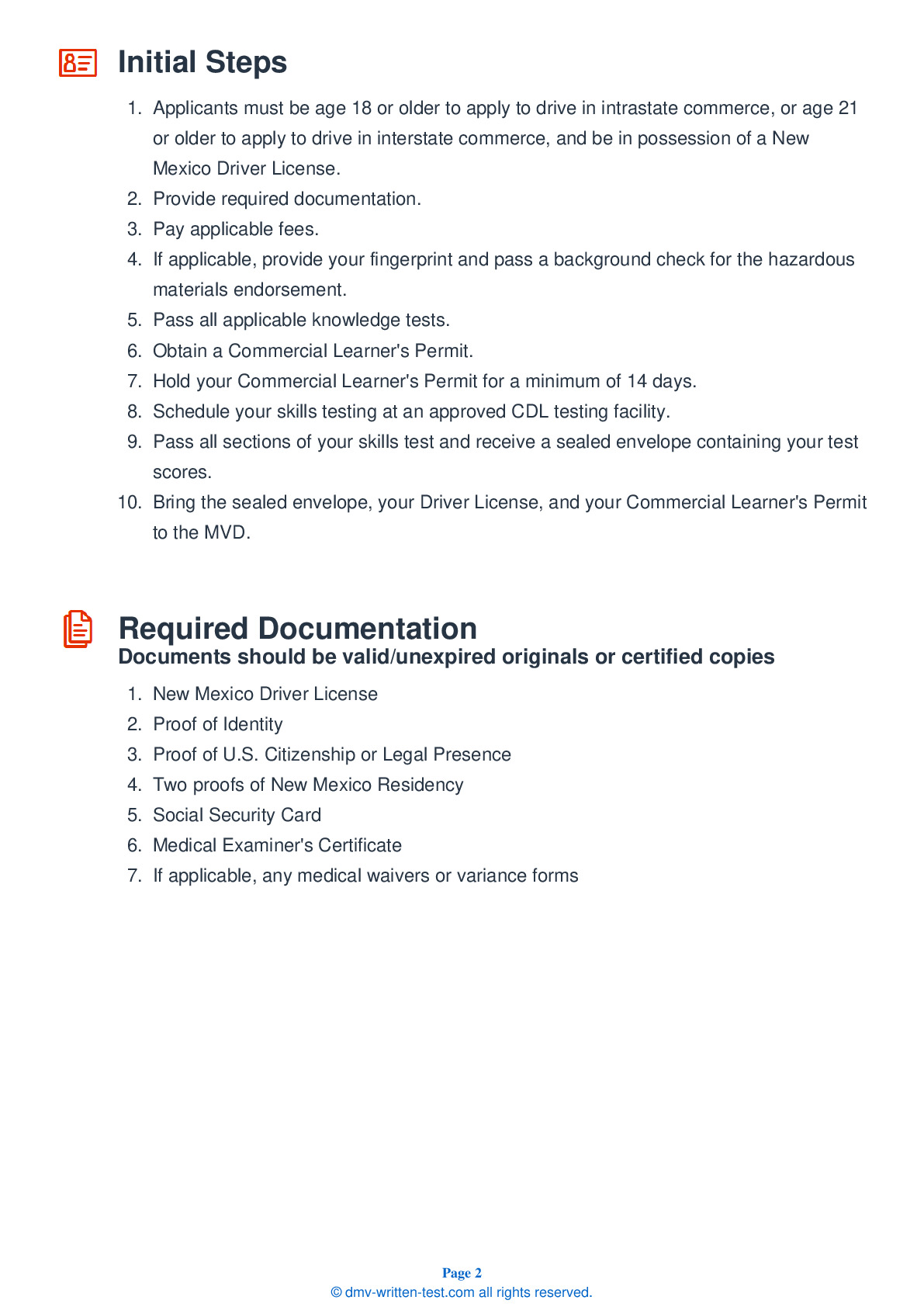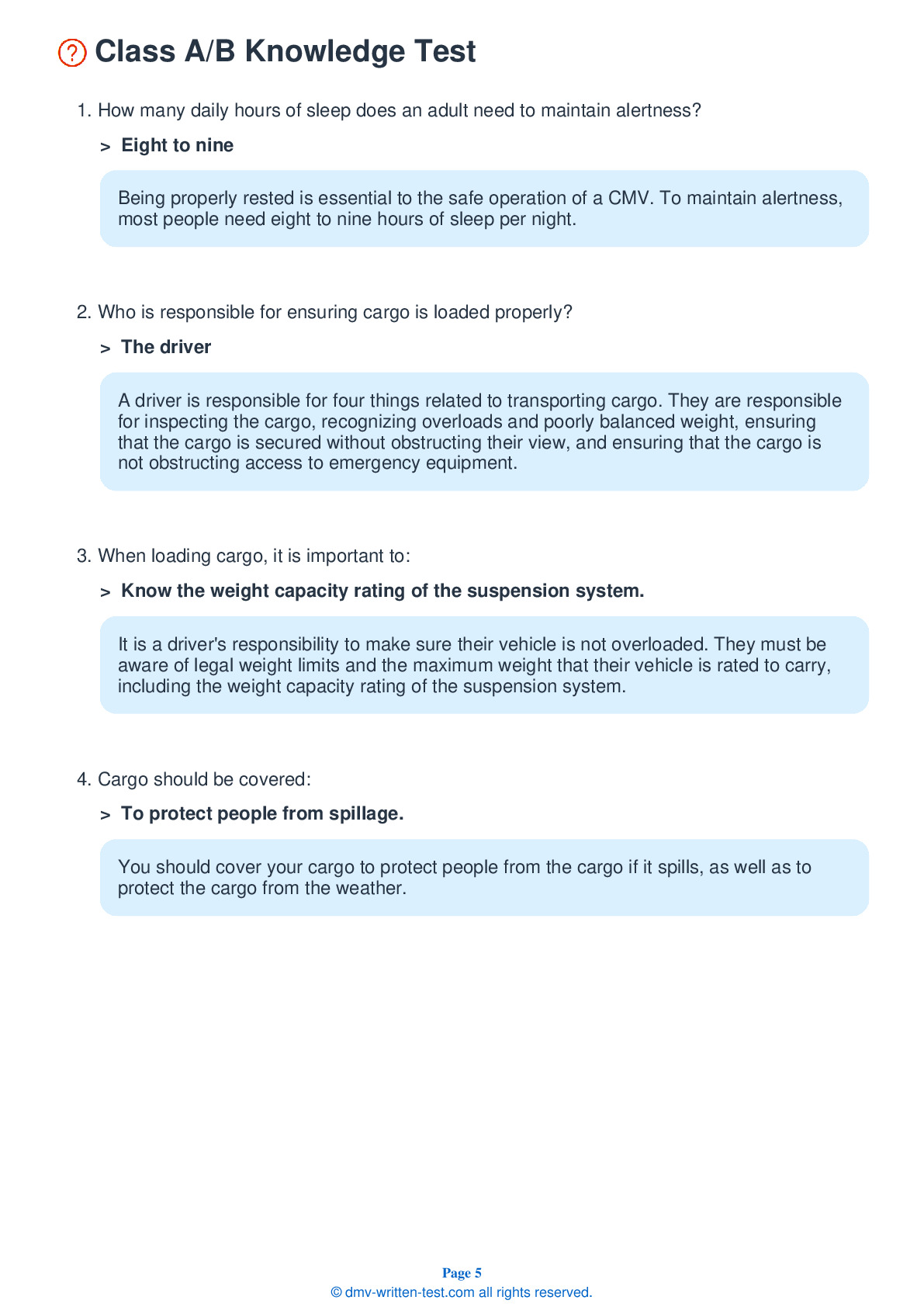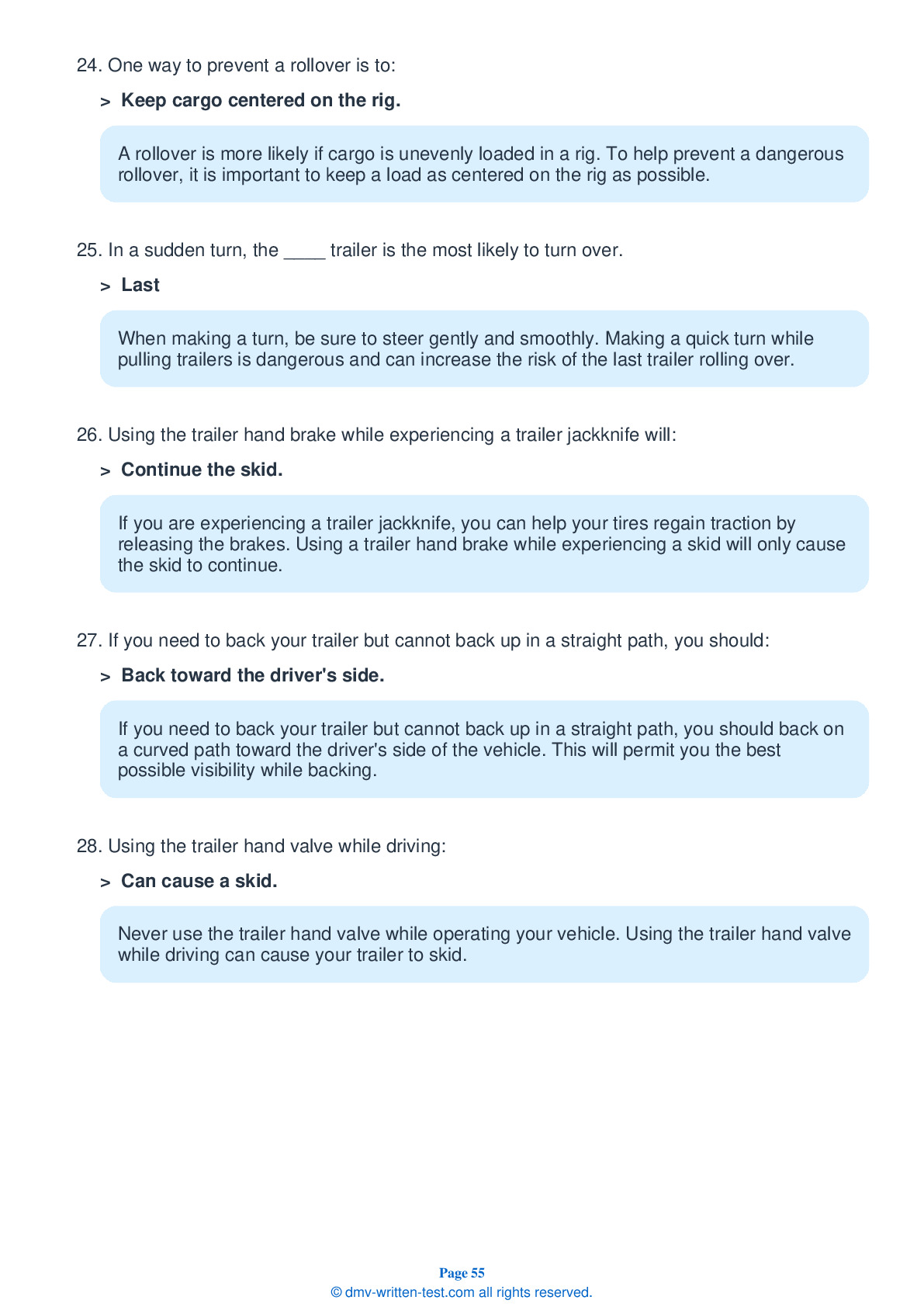Air Brakes
This endorsement is required for driving a vehicle with air brakes. To receive this endorsement, applicants must pass a written test. The test consists of 25 multiple choice questions. Each question has three answer choices. To pass, the applicant must answer at least 20 questions correctly. Test questions come from the New Mexico Commercial Driver License Manual. Questions come from the chapter covering: Air Brakes. The Air Brakes endorsement may be used with the Class A, B or C CDL.
Number of Question
Passing Score
1. You should test the low pressure warning signal by:
Explanation
It is essential that your low pressure warning light functions properly. After allowing the system to charge, you can test the warning signal by rapidly applying and releasing the brake pedal. This will release air from the braking system and the warning signal should come on when pressure drops to a dangerous level.
2. In a vehicle with dual air brakes, a leak in one system ____ the second system.
Explanation
A dual air brake system is made up of two separate air brake systems. If there is an air leak in one system, it may not affect the other.
3. Some water and compressor oil is usually found in the compressed air within an air brake system. The water and compressor oil:
Explanation
If water and compressor oil are left to build up in an air brake system, the system can be damaged. Air storage tanks are equipped with drains to allow this accumulation to be removed. Manually controlled drains should be operated at the end of each day of driving.
4. The ____ between an air compressor and reservoir tank prevents air from escaping if the air compressor has a leak.
Explanation
A one-way check valve is required to be between an air compressor and the first main reservoir. This valve prevents air from escaping the system if the air compressor develops a leak.
5. An emergency brake must be controlled by:
Explanation
All trucks, truck tractors, and buses must be equipped with emergency brakes and parking brakes. Because air pressure can eventually leak away, emergency and parking brakes should be held on by mechanical force.
6. When leaving your vehicle unattended:
Explanation




